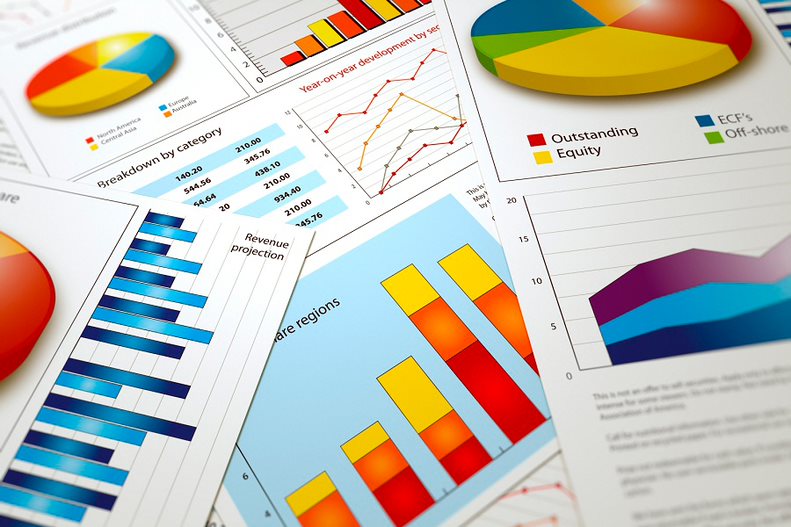

Institutional investors are striking back in stocks, upending the brief and kooky reign of the retail day trader.
So says veteran market-structure analyst Larry Tabb, citing a panoply of evidence including volume on legacy venues like the New York Stock Exchange as well as the quickly swelling value of shares changing hands each day in equities. Data from Morgan Stanley found big-money investment houses bringing increasing pressure to bear on the futures market, while prime brokerage data showed hedge-fund selling drove the selloff in speculative tech at the turn of the year.
The change is both a cause and consequence of big shifts in the market’s volatility backdrop, with concerns about Federal Reserve policy forcing a reordering of institutional portfolios. According to Tabb, it’s a landscape that is likely to prove less and less conducive to the day-trading heroes whose derring-do was a big influence on prices in the post-pandemic era.
“If volatility stays high, retail lags. And if I was to be a betting man, I would be saying volatility will remain high for probably throughout this year,” said Tabb, head of market structure research at Bloomberg Intelligence. “Outside of another meme stock phenomenon, it would seem that institutions are going to wind up driving flows.”
A market driven by these institutions is one where old-school metrics like earnings announcements, valuation, and guidance matter more than populist drivers like Reddit postings and name checks on TikTok, Tabb says. For better or worse, when big-money funds rule the roost, companies in bankruptcy proceedings are unlikely to find enthusiastic buyers, as Hertz Global Holdings Inc. did in 2020.
The share of overall trading represented by do-it-yourselfers has come down a lot. After spiking to 24% in the first quarter of 2021, it’s now around 18%, Tabb and other BI analysts estimate. What’s more, a phenomenon where the value of daily trading is rising faster than the absolute number of shares changing hands shows deeper-pocketed investors are dominating flows.
“The diversion is due to a transition to higher-priced securities and likely a result of a slowdown in retail trading participation and a shift to institutional,” BI wrote in a report last month. “Retail investors have historically favored lower-priced securities and active trading in small-cap stocks.”
Not that retail traders aren’t still buying like crazy. They sent a net $41 billion into stocks last month, according to estimates from Morgan Stanley’s trading desk. Increasingly, though, they’re running into worried institutions forced into action by the Fed. Hedge funds continued to shed holdings as the specter of higher interest rates battered their favorite growth stocks. Trend-following traders piled on, with benchmark indexes falling below key support levels.
In fact, money managers whose investment decisions are based on macroeconomic and market trends unwound $43 billion of equity positions in January — enough to offset all the retail inflows, Morgan Stanley data showed.
That’s “emblematic of the institutional pressure on the market,” Morgan Stanley’s Christopher Metli and others wrote in a recent report. “While retail likely contributed to some of the market moves, it’s likely that institutional flows are becoming an even bigger driver.”
On Friday, these systematic macro funds had to sell $4 billion of S&P 500 futures in the final 45 minutes of trading, potentially leading to the late-session market weakness, the firm said. This group is estimated to offload between $10 billion to $20 billion of equities next week amid heightened index-level volatility.
To Max Gokhman, the chief investment officer at AlphaTrAI Inc., the retail crowd’s influence has always been exaggerated. “It’s not that they had a magic touch,” he said. “It’s that market dynamics created this amazing market rally, and they just greased the wheels a little bit.”
Even though overall retail activity last month was at a 13-month high, the group’s share of total market volume still fell to the lowest level since March 2020, according to Morgan Stanley. That happened as institutions were unwinding holdings fast enough that their selling appeared to have overwhelmed buying from the retail crowd.
Take commodity trading advisers, or CTAs, which watch market trends for trading signals. As the S&P 500 and the Nasdaq 100 dropped to fresh lows to start the year, these computer-driven funds were prompted to sell equities and went short against the market. Meanwhile, a spike in price swings forced volatility-targeted funds to reduce leverage “significantly,” according to JPMorgan Chase & Co. estimates.
“Because of the higher volatility, a lot of these institutional investors were basically forced to rebalance their portfolios — they’re ruled-base and they have to trade,” said Peng Cheng, a global quantitative and derivatives strategist at JPMorgan. “Whereas for retail investors, if they want to step in and buy the dip, they can. If they don’t want to, they don’t have to trade.”

Relationships are key to our business but advisors are often slow to engage in specific activities designed to foster them.

Whichever path you go down, act now while you're still in control.

Pro-bitcoin professionals, however, say the cryptocurrency has ushered in change.

“LPL has evolved significantly over the last decade and still wants to scale up,” says one industry executive.

Survey findings from the Nationwide Retirement Institute offers pearls of planning wisdom from 60- to 65-year-olds, as well as insights into concerns.
Streamline your outreach with Aidentified's AI-driven solutions
This season’s market volatility: Positioning for rate relief, income growth and the AI rebound
